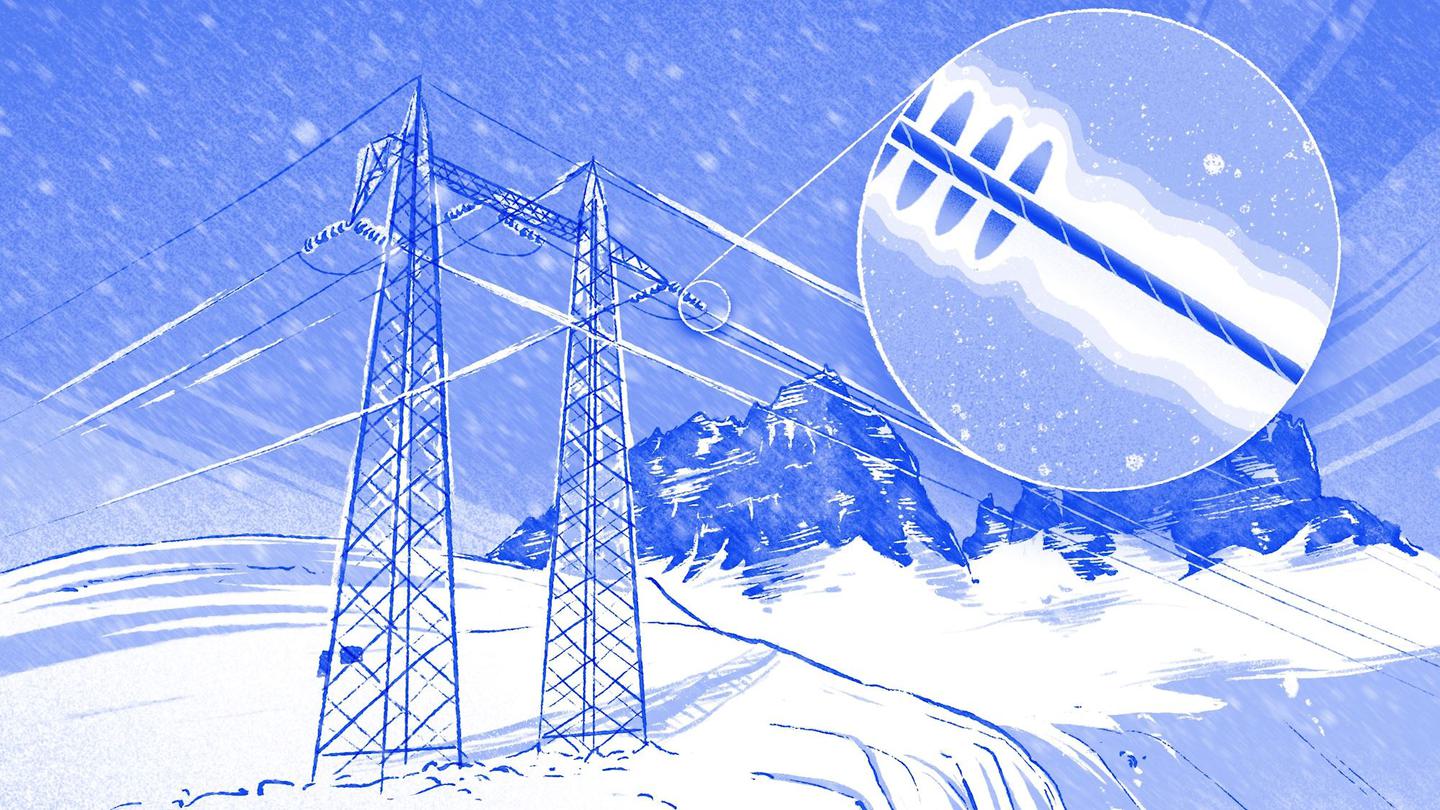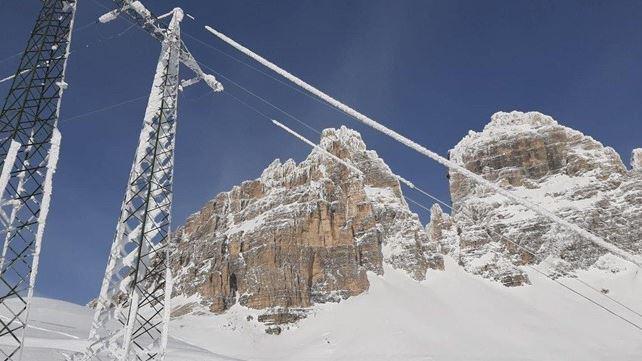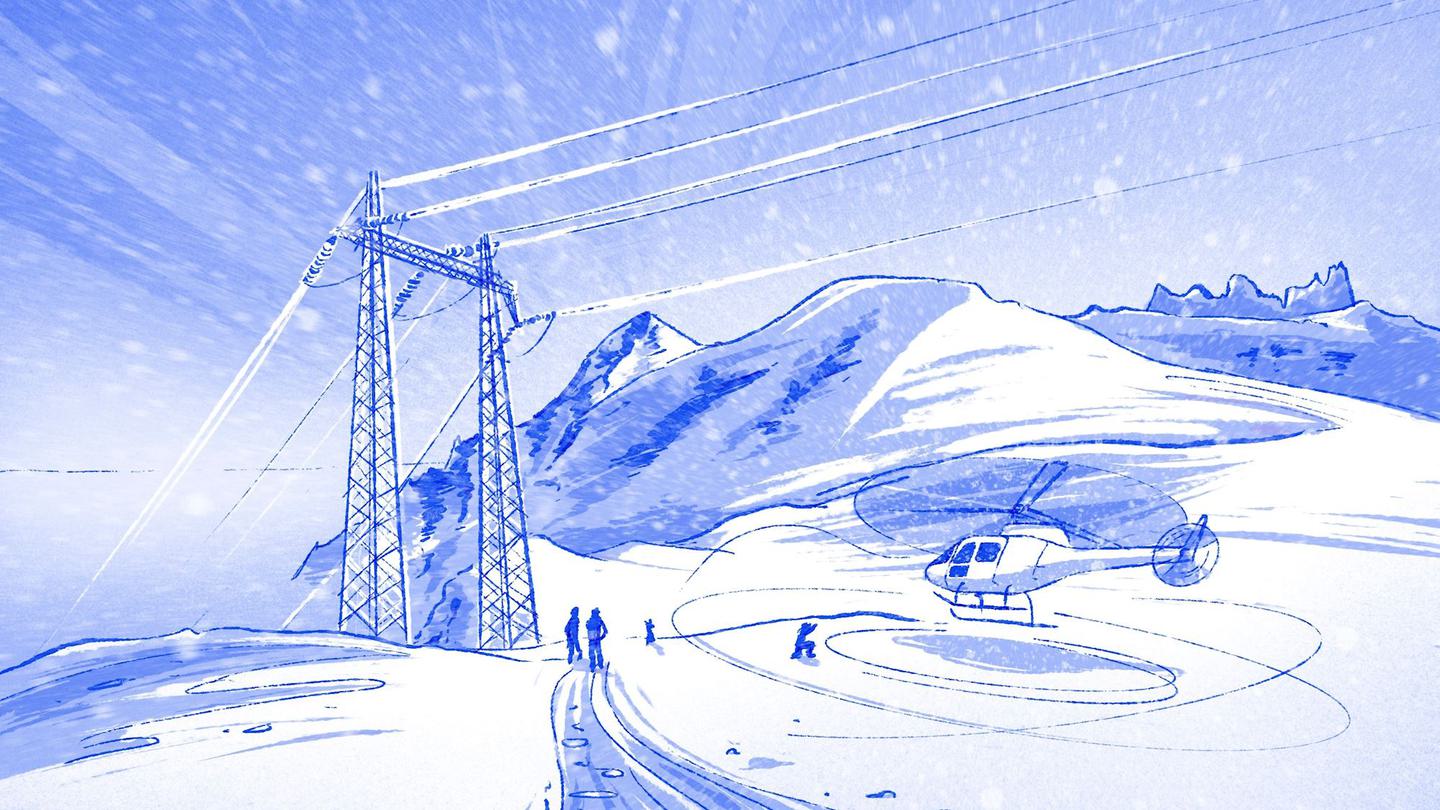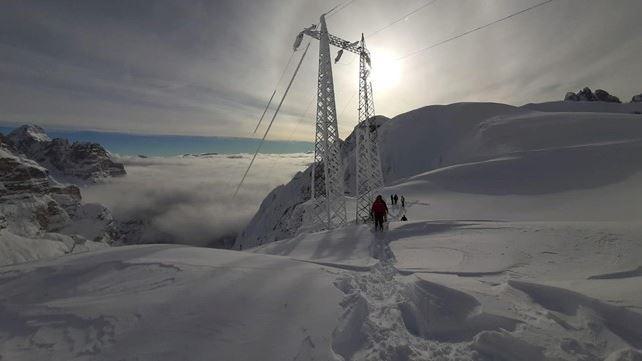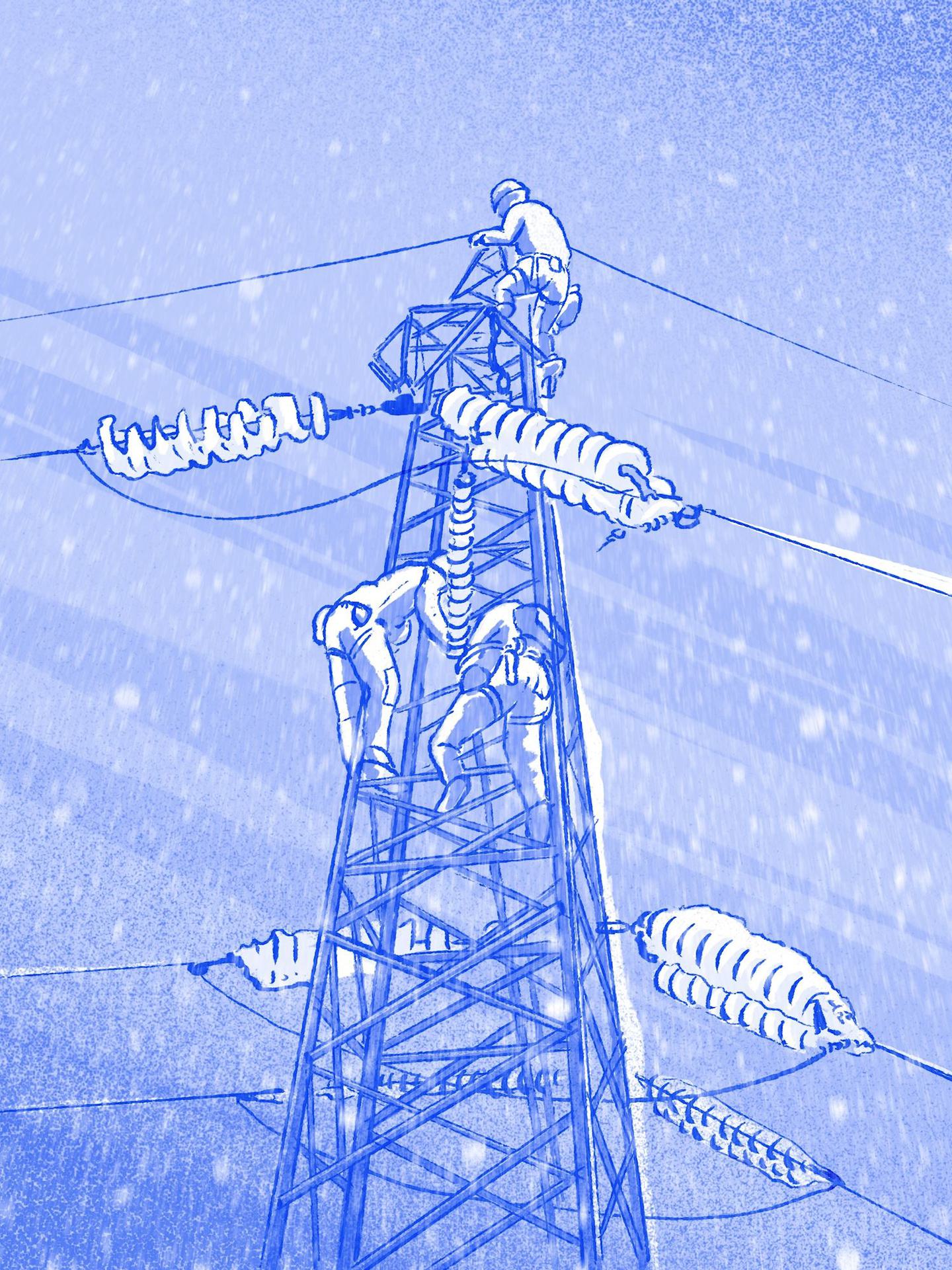Winter, when it comes to electrical infrastructure, is one of the most critical times. The bad weather and cold temperatures put a real strain on all the elements that guarantee the normal operation of the electricity network, despite the precautions and measures taken. Power lines are built taking into account the many factors and loads that will act on the structures in certain locations and weather conditions, but excluding all risks is impossible.
For conductors, shield wires and supports, the biggest threat is: snow. In mountain areas, snow, in addition to being a constant winter condition, can become a major problem when it comes to pylons and electricity. Snowfall is the source of "sleeves", cylinders of ice caused by wet snow (i.e. with a high content of liquid water in the flake) that can reach dimensions of up to ten times the diameter of the conductor. They form when snowfalls are at temperatures close to zero and the wind is low. As a result of the latter, wet snow is able to adhere the conductor - the wire which electricity flows along- causing it to rotate as it gradually solidifies, this is how the sleeve effect is created.

